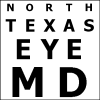Nasolacrimal Duct Obstruction
Although it can be caused by wind, smoke, or pollen, an excess of tears in children is often caused by congenital nasolacrimal duct obstruction, a condition in which a baby’s tear duct is blocked instead of draining normally through the duct into the nose. The condition can be recognized by tears that build up on the surface of the eye and overflow onto the eyelashes, eyelids, and down the cheek. Because the tears are not draining normally, babies will sometimes get infections, which can cause red, swollen eyelids and yellowish-green discharge.
Congenital nasolacrimal duct obstruction is usually caused by the failure of a thin tissue at the end of the tear duct to open properly when the child is born. It can also be caused by a lack of openings to the duct system at the eyelids, by infections, and by abnormal growth of the nasal bone, which pinches off the tear duct. Some infants may have excessive tearing due to narrow tear ducts rather than an obstruction. In this case, the tearing may be intermittent, occurring when the infant has a cold or during especially windy or cold weather. Finally, congenital glaucoma can cause tearing in children. This serious condition is often accompanied by other signs, including an enlarged eye, a cloudy cornea, and light sensitivity.
Most babies born with blocked tear ducts do not need treatment. More than 90% of blocked tear ducts clear by themselves before the child turns 1 year old. If treatment is necessary, the first course of action is usually tear duct massage, along with topical antibiotics to treat infection. The tear sac is located between the inside corner of the eye and the side of the nose. The purpose of massage is to put pressure on the tear sac for a few seconds to pop open the membrane at the end of the tear duct. This is most easily done by putting your hands on each side of the baby’s head and using your index fingers to press on the tear sac. This should be done several times a day, such as at after feedings or diaper changes.
In certain circumstances, tear duct probing, balloon tear duct dilation, or tear duct probing with tube placement may be necessary. Should your infant need treatment to remove a tear duct obstruction, ask your ophthalmologist (Eye M.D.) to discuss appropriate treatment options with you.
Acquired nasolacrimal duct obstruction occurs occasionally in the elderly population. This usually presents as constant tearing with tears running down the side of the face. It can often be treated by irrigating the duct with saline solution in the office.
